The Brave New World of eLearning: Let’s Not Strap on Feathered Wings
Education
David J. Schleich, PhD
Dickens nailed it when he wrote in 1859, “It was the best of times; it was the worst of times.” [A Tale of Two Cities] Two centuries later, the best and the worst are before us in the higher education and healthcare terrains. There is disruption afoot everywhere, exacerbated by the social, political, and health issues arising from Covid-19. There were problems already stirring the Naturopathic Education world prior to the first news out of Wuhan, China, and these problems persist, such as the cost of higher education, student debt, equity gaps in opportunity and access, and the debate about the long-term value proposition in higher education.
The worry and confusion about what will happen, now that we’ve had to put so many of our eggs into the eLearning basket, have put me in mind of Andy Hargreaves, the distinguished Thomas More Brennan Chair of the Lynch School of Education at Boston College and co-founder/director of the International Centre for Education Change at the Ontario Institute for Studies in Education. Many years ago he was already developing distance-learning materials at the Open University in Britain, the world’s first distance-learning institution in higher education. In a lecture I was fortunate to attend as a young man, I wrote down and kept these notes from that day:
In the distance education world, expect more up-front planning and expect your students to have more to say. The teacher at the front is going to become more mentor than all-wise boss before blackboard proscenium arch in our classrooms. You young teachers won’t seeit quite yet, but about the time you are retiring, it will be the norm; teachers will become learning architects and be seen on screens more than in chalk and talk classrooms.
Today, indeed, we have Arizona State Online, Southern New Hampshire University and Western Governors University. And my very own university is suddenly a virtual campus. In the background in Portland, OR, we have the recent demise of Marylhurst and Concordia Universities, the latter of which excelled in online offerings out of the gate. Oh yes, and there are those MOOCs that never went away, either. What kind of brave new world is this, anyway?
It’s a world where we are trying to respond nimbly and quickly to sudden shifts in how we go about designing and delivering education. Our residential naturopathic programs are diving into the labyrinth of remote learning where online design, delivery, and assessment are essential to keep our programs airborne. CNME standards for delivery are changing before our very eyes. Top of mind in the menu of skills we need urgently to adopt and adapt to is getting good at digital learning. Our schools have roared onto the runways, and we’re in the air, for better or for worse. However, just as Daedalus admonished his son Icarus not to fly too high or too fast lest the wax holding the feathers together melts, or too low lest those same essential feathers get soaked by sea water, we have to get it right or crash into the sea.
As we migrate up and away from the norm into a labyrinth of curriculum change toward a safer place, we’d best not strap on feathered wings at all. We need to become very good at a robust online technology grounded in more than “plug and play.”
Bernoulli, the Wright Brothers and Christensen
Let’s do a bit of the history. Take Bernoulli, for example, who figured out in the 18th century something that it took the Wright Brothers 165 years later to translate into heavier-than-air flight. So, we may understand the notion of content management systems (CMS), but which one do we use, and how do we help our teachers use them as more than a stop-gap that will keep our programs in the naturopathic medical education space airborne for more than 59 seconds and 852 feet?
Finding software that will keep us up there and serve our passengers (students and faculty) safely for many months, and even years, has proved daunting. Most of our current program delivery in naturopathic medical education makes use of CMS technology, which was already present in part on our campuses, but not uniformly embraced. At the same time, our AANMC programs are currently somewhat thin on IT resources to guide faculty through the nasty challenging updrafts, wind shears, and unforgiving changes in the political, economic, and andragogic weather ahead. We have to focus more money and more time on helping our faculty get very, very good and very fast at course authoring, interactive content (including interactive video), live video conferencing, identifying and choreographing social communities, gamification, the construction of reliable and secure badges/certifications, reports/analytics, quizzes/assessments, user management, event management, eCommerce, subscription management, notifications (including geofenced notifications), instant messaging, blending learning, micro-learning, asynchronous learning, synchronous learning, directories, and mobile learning.
As recently as last year, Harvard Business School professor, Clayton Christensen, predicted that in the next decade, perhaps as many as half of our traditional colleges and universities will not operate, or even exist, for that matter, as they have for so long, largely because “online education will undermine their business models to such a degree that many won’t survive.” (Ahmad, 2019) In his remarkably prescient book, The Innovators Dilemma (published a quarter-century ago), the Sears Roebuck example at the time shocked everyone. I read it as a newly minted president of CCNM, a small, niche college in Canada. I marveled at how terse and savvy Christensen was about why Digital Equipment Corporation, Data General, Prime, Wang, Hewlett-Packard, and Nixdorf were dicing and slicing the previous giants like IBM, and even the rising star of Apple at the time (Apple, like IBM, was slow at bringing portable computers into the marketplace).
Christensen’s “principles of disruptive innovation” are now legendary. His conversation about “sustaining vs disruptive technologies” is sharply relevant in the current climate of uncertainty and change. There is positive news, though. Christensen said, “When people … designed flying systems that recognized or harnessed the power of [Bernoulli’s laws and principles], rather than fighting them, they were finally able to fly to heights and distances that were previously unimaginable.” (Christensen, 2000, p.xxii) We are going to do well if we do this right. We can’t get sloppy in our urgency or use the wrong tools. We might have to land and try again if we have time. Or, the gods forbid, we might face what Icarus faced.
Principles of Disruptive Innovation
If we zero in on 1 aspect of what is right before us, it is that classroom and campus-based instruction – a key platform for the formation of many professions – is being steadily replaced by distance education enabled by the internet. The recent severe disruptions in our delivery model for naturopathic medical education are at once a jolt and a powerful opportunity. Let’s have a quick look at 3 main principles in Christensen’s research, conjugating them in the language of higher education.
Principle 1. Smaller, niche colleges (and universities) with non-mainstream health sciences and medical education can challenge established incumbent medical programs and professional bodies. They can do this, in the parlance of “disruptive innovation theory,” by exceeding the needs of a deeply monetized marketplace that is not mitigating chronicity or the dangerous side-effects of a contemporary, profitable approach (eg, pharmacological damage, exorbitant service costs). The sustainability of the status quo is already being questioned by policymakers and funders. We did something about the overlooked segments (ie, the over-focus on symptoms and indifference to prevention, disease-centered rather than whole-person-focused medicine, the funding of systems which reward volume of intervention and not outcomes) by producing education that launched doctors who brought into service for patients more suitable, less mechanistic/reductionist functionality at a lower price to civil society. Mainstream patients began adopting naturopathic medicine offerings in increasing numbers at the same time that data about biomedicine outcomes revealed shortcomings. The functional and integrative medicine communities in the allopathic world took notice and began assimilating a sizeable chunk of our disruption.
We can adapt to, adopt, and stay strong with wave after wave of educational practices, accreditation, licensing of our graduates, or best pedagogical practices, and at the same time stumble over simpler, disruptive ones (such as online delivery) to make the best use of teachers’ and students’ time because we simply do not have the cash flow or market of the mainstream. We have had pieces of it here and there, but no scale. How we deliver our programming is part of this scenario. We simply imitated biomedicine’s structures, appealed to unserved consumers (of natural medicine approaches to health and well-being), and gained purchase in a highly competitive terrain. The medical integrationists and medical functionalists, though, have been moving into and legitimizing – from their advantaged regulatory and funding location in civil society – this historically overlooked segment.
We knew that quality had to rise to satisfy the customers of mainstream biomedicine. In our efforts to achieve that quality (accreditation, improved licensing and registration of practitioners, research contributions), our costs rose faster than our revenues. We stayed fringe and did not make enough progress into the mainstream. Then, along comes the threat to residential school models, and we’re thrown off balance even more. We did not busy ourselves with building a different business model (based on the incumbent healthcare professions) for the education side of our professional formation when we had a bit of space to do just that.
Principle 2. Small markets don’t solve the growth needs of professions in formation. We have grown new programs and schools, and did have, for a time, “first mover advantages” over the later holistic, integrative, functional MDs, DOs, and others. Yet, it is progressively more difficult for us to enter newer, small markets which were destined to become the large ones of the future … of today. We have known since the mid-1970s that this was emerging; however, we were unable to scale fast enough, though we tried valiantly and continue to do so. The current affront to the supply of new naturopathic professionals to fuel professional formation will force us to rethink how to scale. Front-end educational sustainability is a big part of that scaling, as are licensing efforts and naturopathic medical research that contributes to the codifying of our knowledge.
Principle 3. Markets that don’t exist can’t yet be analyzed. Our processes and values in the health education industry have tended to migrate toward the mainstream. The very modalities and ideas which were fundamental to the early naturopathic trainers and educators have been eroded over time by curriculum that gradually defaulted more to the priorities of licensing doctors for the marketplace, than with sustaining a different, disruptive approach to biomedicine’s hegemony. Take “tch’s” for example (that is, measuring quality by teaching contact or classroom hours), or look closely at the elaborate entry-to-practice examination scaffolding, or at the dearth of broad-spectrum clinical training. As Christensen puts it, “the very processes and values that constitute an organization’s capabilities in one context, define its disabilities in another.” (Christensen, 2000, p.xxvii)
The Long History of Educational Transformation
Recurrent turbulence in higher education is not new. Institutions have evolved for a long time. Whether it’s as part of Martin Trow’s elite-mass-universal triptych about the transformation of higher education from an elite business to mass and universal access (Trow, 1970, 1973) or the impact of information technology on the teaching and learning enterprise, change is constant. Trow (2000) and others have continued to study the impact on higher education of the advance of information technology. The social-distancing mandates of the winter of 2020 have been especially catalytic in materializing these effects. Peter Scott (2019, p.14), from the UCL Institute of Education, reflecting on Trow’s historical perspective, comments:
Access to higher education [was] determined by the, often open, availability of online courses and other learning materials on the internet. Intellectual norms had now been succeeded by the technologies of delivery. Trow argued that this would inevitably lead to profound changes in institutional structures and attitudes towards higher education.
A century before that, in 1869, Charles W. Eliot, President of Harvard University, talked about the needs of the larger society in which institutions existed and about how universities and colleges would have to continuously update not only what they produced, but how. He understood that education had to be prescient about changes in the society around those institutions, and that they were hardly the so-called ivory towers of an earlier time. The leaders of many new and emerging US academies, colleges, and universities of Eliot’s day took issue with what he saw coming. In his article, “The New Education” (1869), Eliot pointed out what was missing and had to be attended to. Students will, he insisted, migrate to those places of learning where they could not only get a marketable credential, but also a substantial education which was affordable and accessible. Eliot pioneered one of the earliest migrations of medical education inside a university from its usual perch in private enterprise.
What is likely, among numerous possible outcomes, is that pressure to expand online learning will not abate once campuses physically reconvene. In recent months, many of our naturopathic faculty have been propelled headlong into a transition to online education, with quick training and the best support the colleges could muster (especially in terms of equipment and professional development in online teaching methodology).
A quick review of what is actually out there attests to the courage of our educators to dive in and do the work nearest. So, what is available by way of CMSs that will launch, and not melt or get soggy and crash? Let’s peruse a sampling of the abundance:
- Moodle: Cloud-based learning management solution for business and educational institutions with tools to customize training courses, including centralized dashboard; data backup, contact management, activity tracking, and built-in calendar. Messaging for students, cross-organization communications, mobile applications for Android and iOS devices.
- Tovuti: All-in-one, cloud based; creating, delivering, tracking online education and training. So-called “end to end” solution. Gamified.
- Bridge: Employee development platform. Peer-to-peer practice, live in-person training, external learning, online courses, mentorship, manager 1:1s, goal tracking, peer assessment. Off-the-shelf courses, knowledge retention, interactive video, continuous performance management, skills assessment and reporting features. Learning paths and course offerings can be customized to individual user profiles, quiz-building tools, performance analytics, customized logic, SCORM (shareable content reference model = set of technical standards for software products … a kind of de facto industry standard for eLearning interoperability; determines how online learning content and Learning Management Systems [LMSs] communicate with each other; a technical standard, not pedagogical or linked to instructional design).
- Saba: Cloud-based learning and talent management application. Features include course building, learning management, performance management, goal tracking, succession planning, recruiting. Web and video meetings embedded into the content. Learners and tutors can collaborate during a training.
- Virtual classrooms and recording functionalities: Personalized dashboard allows teachers to track learner’s progress, evaluate test scores, engagement levels. Access to thousands of learning courses available online. Personalized learner portal.
- Google Classroom: Cloud-based learning management system, part of Google Apps for Education; interconnectivity with Google Docs, Google Spreadsheets, and Google Slides – all of which make for easy submission by students of their assignments; accessed via mobile apps in Android and iOS.
- Blackboard Learn: Interactive LMS, content authoring, virtual classroom, certification management, extended enterprise, social learning functionality. In-system calendar, along with an activity stream, digital badges.
And there are so many others: PiiQ (cloud-based employee performance and learning management system); SkyPrep, Coassemble (create, manage and deliver online education) … compatible with Android and iOS devices; Auzmor Learn, Canvas, Mindflash, Intertek Alchemy (designed for food manufacturers); eLearning Cloud, TalentLMS, Centralpoint by Oxycyon; Prosperity LMS; Accord LMS; OpenSesame, CD2 Learning; Freestone; Lessonly; Latitude Learning; HealthcareSource NetLearning; Wisetail LMS; Brightspace (for higher ed to run both blended and fully-online courses); Skilljar; Adobe Captivate Prime; Edmodo; etc.
Never Again As We Were
As our teachers and their IT mentors wade into this brave new world, they will want to be sharply aware of the pros and cons of their choices, since our students and the profession we serve both depend on new cohorts growing our reach year after year. What does the software chosen offer that our teachers need right now? We must be careful that increased flexibility is not achieved at the risk of reputation. As well, ease of access may have the price tag of decreased social interaction. Further, affordability might come with the downside of fewer available courses. Historically, we have been concerned that online learning can be affected by self-discipline issues, no face-to-face interaction, a lack of meaningful input from trainers, and the diminishment of the transformational power inherent in the process of finishing a course or a program in person and among groups.
There are experts out there like Mark Edmundson (2012), who earlier this decade alerted us to the potential implications of a large-scale commitment to digital learning platforms. He writes, “With every class we teach, we need to learn who the people in front of us are. We need to know where they are intellectually, who they are as people and what we can do to help them grow. Teaching, even when you have a group of a hundred students on hand, is a matter of dialogue.” He warns against the “one-size-fits-all” nature of some online materials, warning that their format often tends to be a monologue and not a real dialogue. He contends,
Learning at its best is a collective enterprise, something we’ve known since Socrates. You can get knowledge from an Internet course if you’re highly motivated to learn. But in real courses the students and teachers come together and create an immediate and vital community of learning. (Edmundson, 2012)
Meanwhile, more recent higher-education commentators, such as Caroline Alphonso (2020), maintain that “the education world has been turned upside down and that online learning may reshape the classroom.” Alphonso predicts that “significant parts of the movement toward remote learning will likely soon be integrated into curriculums, reframing discussion around the issue in the months and years ahead.” She concurs with Marina Milner-Bolotin (associate professor, faculty of education, UBC) in predicting that education is embarking on a shift that will not end any time soon. Citing Bolotin, Alphonso anticipates “a steep increase in online learning that will continue beyond the [pandemic] and that people now will pay much more attention to it as they will experience its power.”
Steven Mintz, one of America’s most eloquent front-line leaders in higher education, is at once pragmatic and philosophical about the jam we’re in. He writes, “Our standard approach to online course design – backward design – isn’t enough. Sure, it’s important to identify one’s learning objectives and align one’s activities and assessments with those goals. But a cutting-edge course needs something more: a narrative arc, a starting point, a sense of direction and a destination.” (January 2020) His counsel to the professors in his own institution (Hunter College) is worth paraphrasing and repeating. Among many suggestions for wary professors heading into online teaching, he advises:
- Conceive of the class as a journey.
- Give the course a problem and inquiry focus.
- Combine the synchronous and the asynchronous
- Create opportunities for collaboration, argument and conversation by moving beyond boards and chat rooms.
- Active learning is as important online as in face-to-face classrooms, and processing information remains a key to learning.
- Embed assessments to ensure that students regularly engage with the material.
- Utilize gamification.
- Use multimedia to reinforce learning and augment written and spoken explanations.
- Invite communication, student-led discussion, and peer commentary.
- Include in course design spaces for student data for collaborative analysis.
- Make space in the digital curriculum for collective, widely available feedback.
In another recent blog, “Predicting the Pandemic’s long-term impact on higher education” (March 2020), Mintz alludes to a character in Henry James’ The Wings of the Dove, when he says that perhaps we shall never be again as we were. That may be a good thing, given the path we have been navigating with corrugated brows for a while now.
References:
Ahmad, N. (April 2019). 6 Reasons Why Online Courses Are the Future of Education. The Good Men Project. Available at: https://goodmenproject.com/education-2/6-reasons-why-online-courses-are-the-future-of-education-cmtt/. Accessed January 29, 2020.
Alphonso, C. (March 2020). The education world has been turned upside down: Online learning may reshape the classroom. The Globe and Mail. Available at: https://www.theglobeandmail.com/canada/article-as-online-learning-rolls-out-education-may-change-forever/. Accessed January 29, 2020
Christensen, C. M., Raynor, M., & McDonald, R. (2015). What is Disruptive Innovation? Harvard Business Review. Available at: http://pedrotrillo.com/wp-content/uploads/2016/01/Whatisdisruptiveinnovation.pdf. Accessed January 29, 2020.
Christensen, C. M. (2000). The Innovator’s Dilemma. New York, NY: HarperBusiness Publishing.
Edmundson, M. (2012). The Trouble With Online Education. New York Times. July 19, 2012. Available at: https://www.nytimes.com/2012/07/20/opinion/the-trouble-with-online-education.html?_r=0. Accessed January 29, 2020.
Eliot, C. W. (1869). The New Education. The Atlantic Magazine. Available at: https://www.theatlantic.com/magazine/archive/1869/02/the-new-education/309049/. Accessed February 14, 2020
Mintz, S. (January 2020). The Future (Revisited) of Online Education. Inside Higher Ed. Available at: https://www.insidehighered.com/blogs/higher-ed-gamma/future-revisited-online-education. Accessed March 20, 2020.
Mintz, S. (March 2020). What Lies Ahead. Inside Higher Ed. Available at: https://www.insidehighered.com/blogs/higher-ed-gamma/what-lies-ahead. Accessed March 20, 2020.
Scott, P. (2019). Martin Trow’s elite-mass-universal triptych: Conceptualising Higher Education development. Higher Education Quarterly. Available at: https://www.researchgate.net/publication/334428514_Martin_Trow’s_elite-mass-universal_triptych_Conceptualising_Higher_Education_development. Accessed February 13, 2020.
Trow, M. (Winter 1970). Reflections on the Transition from Mass to Elite, Higher Education. Daedalus 99.1, 1-42.
Trow, M. (1973). Problems in the Transition from Elite to Mass Higher Education. Carnegie Commission on Higher Education. Berkeley, CA: McGraw Hill.

David J. Schleich, PhD, is President Emeritus of the National University of Natural Medicine (NUNM), where he served from 2007 to 2019; former president of Truestar Health; and former CEO and president of CCNM (1996 to 2003). Previous posts have included appointments as vice president academic of Niagara College, and administrative and teaching positions at St Lawrence College, Swinburne University (Australia) and the University of Alberta. His academic credentials have been earned from the University of Western Ontario (BA), the University of Alberta (MA), Queen’s University (BEd), and the University of Toronto (PhD).










